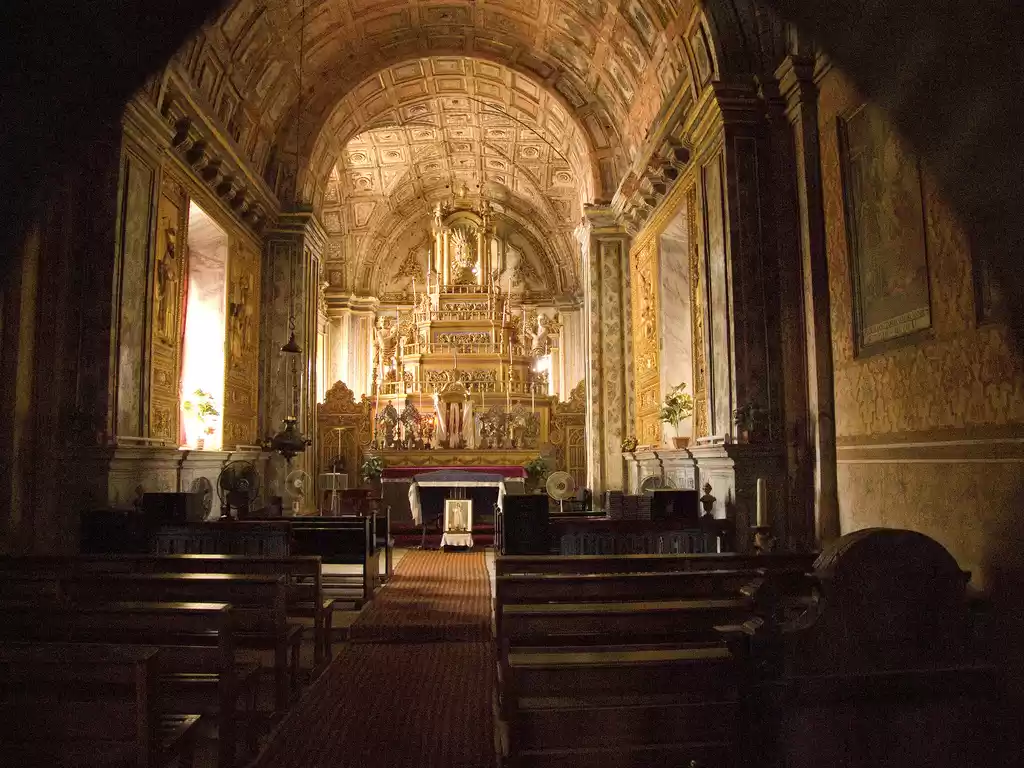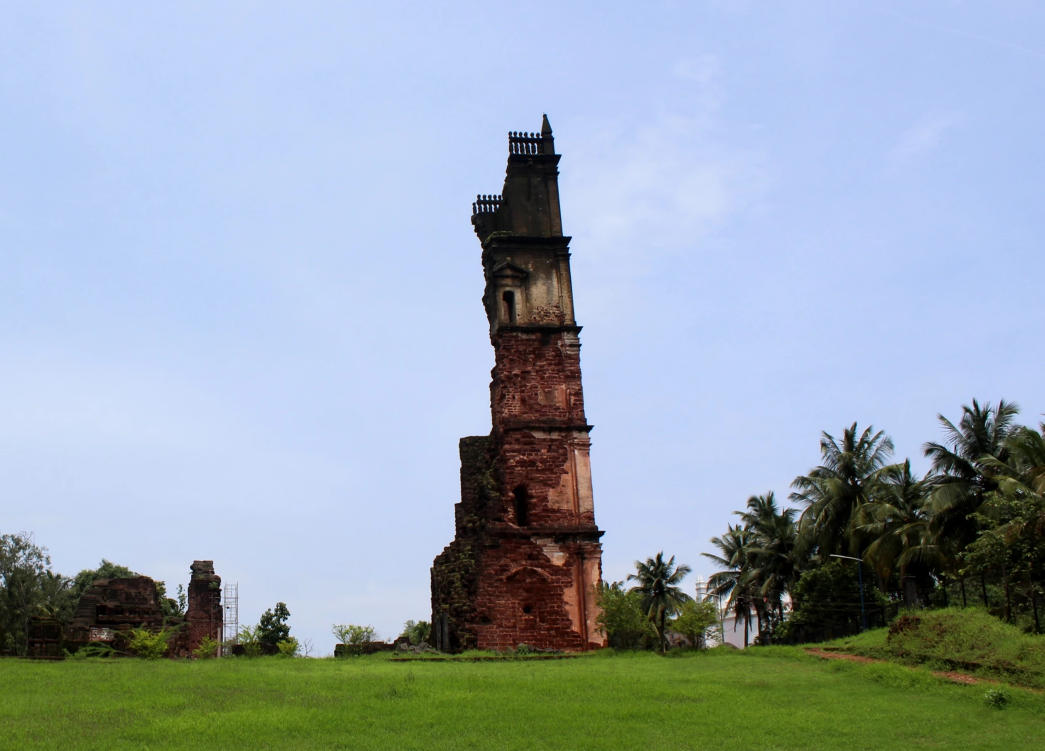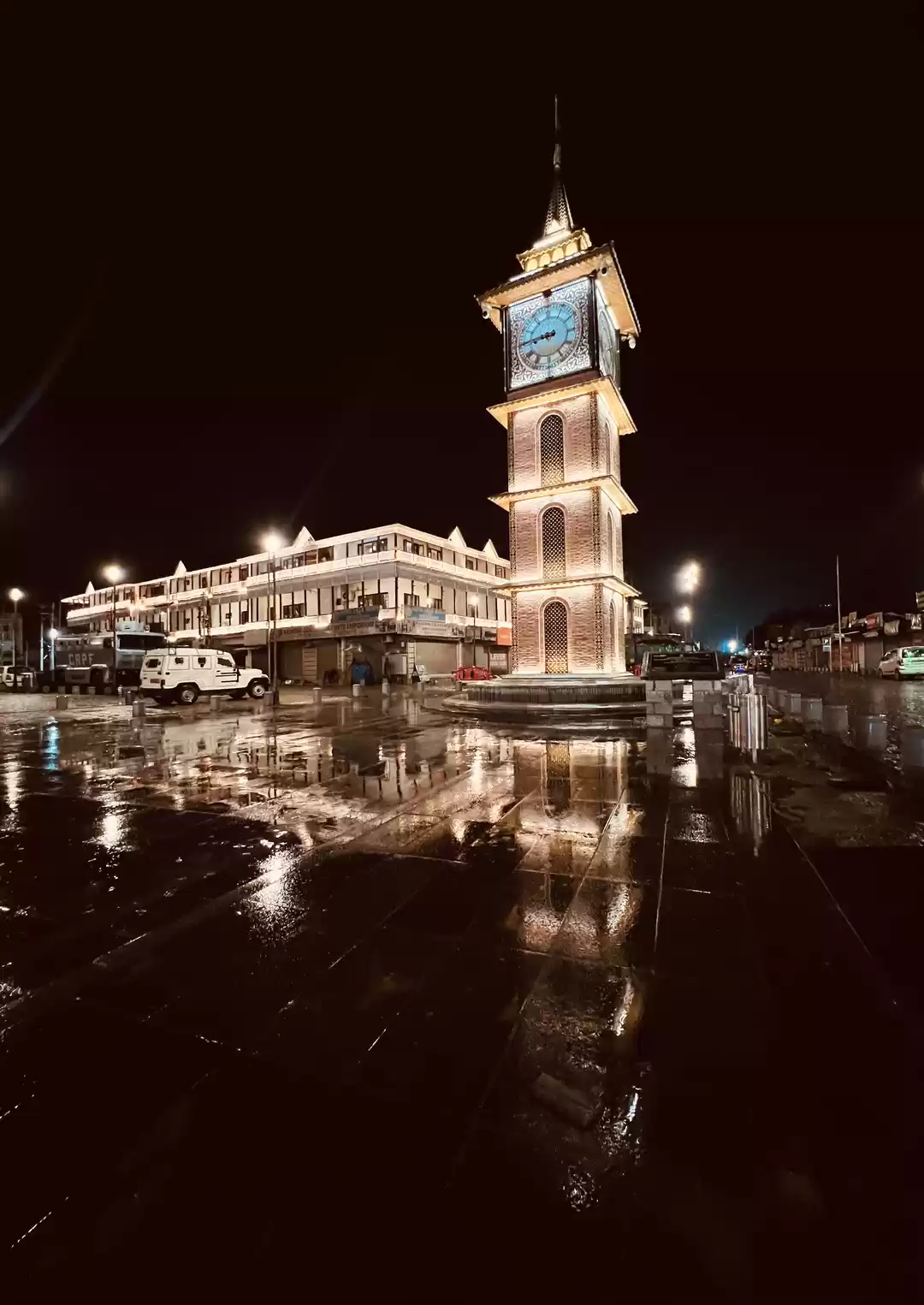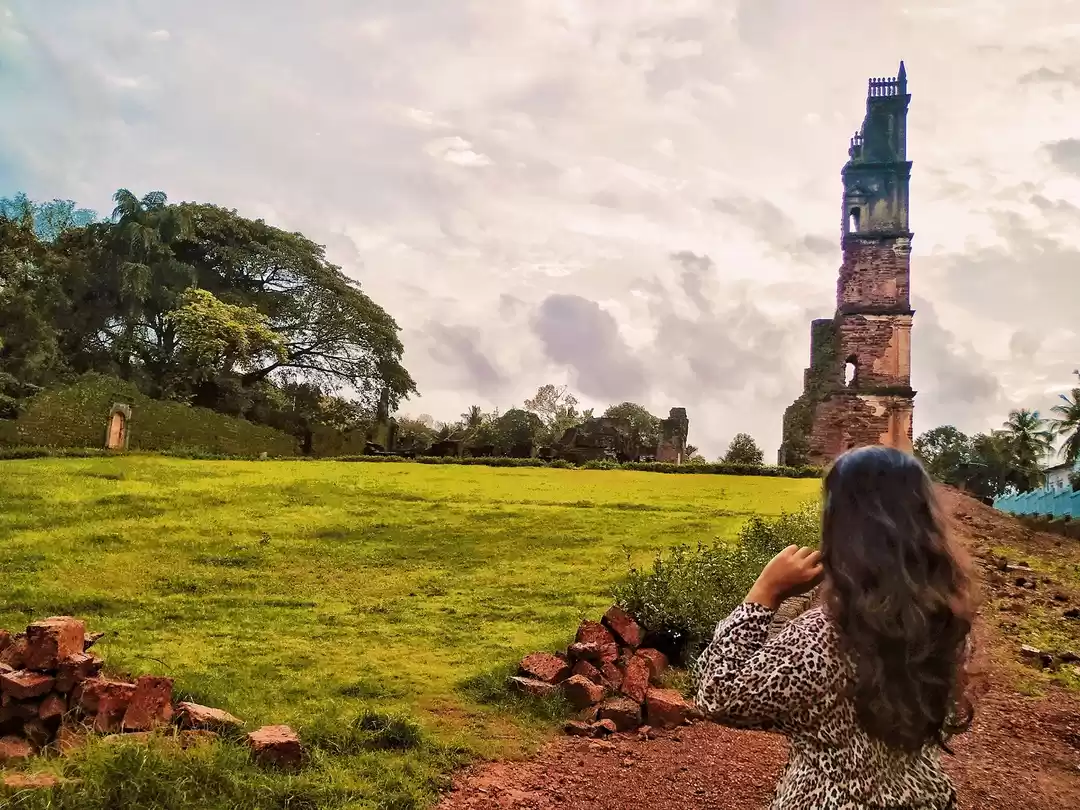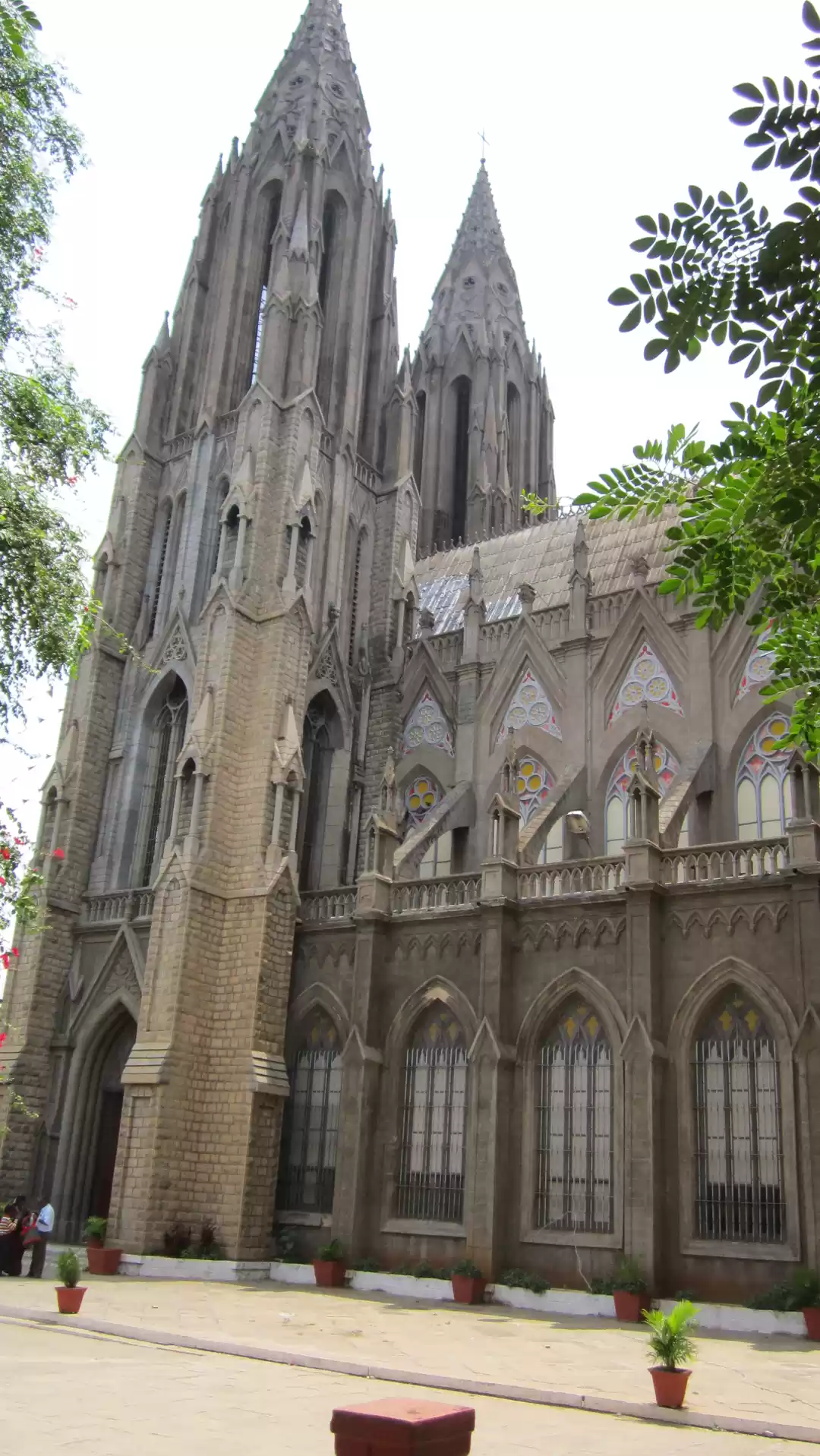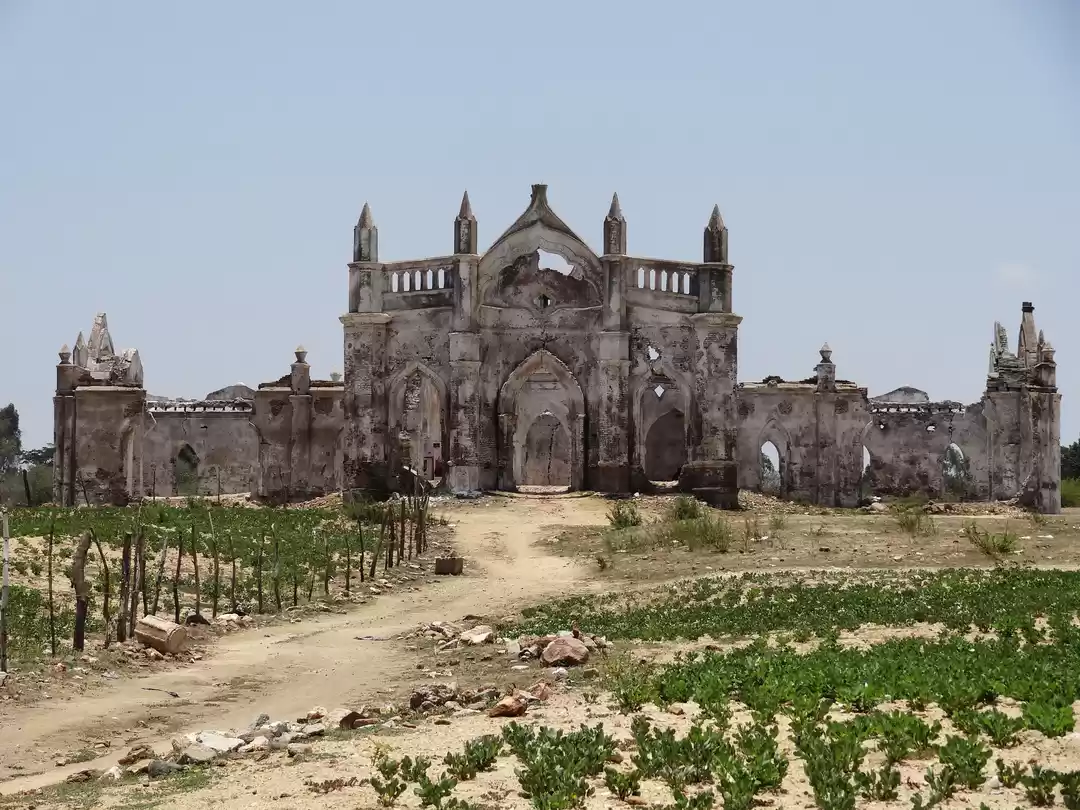As you wander through the enchanting ruins of Old Goa, a towering silhouette emerges amidst the remnants of a bygone era. This is the St. Augustine Tower, a UNESCO World Heritage Site and a captivating testament to Goa's rich Portuguese colonial past. More than just a monument, the tower whispers tales of architectural marvels, a vibrant religious community, and the vicissitudes of time. Curious to unravel its secrets? Join us as we delve into the fascinating story of the St. Augustine Tower, from its glorious beginnings to its enduring legacy as a landmark for modern travelers.
History Unveiled: A Golden Age of Faith and Stone
A Vision Realized: Construction and Architectural Marvel (1572-1602)
Our journey begins in the late 16th century when the Augustinian friars, a Catholic religious order, arrived in Goa. Inspired by their faith and a desire to establish a grand place of worship, they embarked on an ambitious project. Construction of the Church of Our Lady of Grace (the original name of the church complex) commenced in 1572. By 1602, after three decades of dedicated effort, the church stood complete, a magnificent expression of Portuguese architectural prowess in Goa.
The church's grandeur was truly awe-inspiring. Built in the Portuguese Manueline style, a fusion of Gothic, Renaissance, and maritime motifs, it was a sight to behold. The facade, adorned with intricate carvings depicting religious imagery and maritime themes, captivated all who laid eyes on it. Four imposing towers, each reaching a significant height, flanked the structure, with the St. Augustine Tower standing out as the tallest, reaching a staggering 46 meters (150 feet). Constructed from laterite, a reddish brown stone native to Goa known for its durability, the tower housed a majestic bell that resonated across the city, calling the faithful to prayer.
Stepping inside the church was akin to entering a sacred haven. Eight ornately decorated chapels, each dedicated to a different saint, provided dedicated spaces for prayer and contemplation. The four altars, masterpieces of craftsmanship, served as focal points for religious ceremonies. A sprawling convent complex, with numerous cells and courtyards, provided living quarters for the Augustinian friars, who dedicated their lives to serving the community. The entire complex, a harmonious blend of architectural beauty and religious devotion, became a prominent landmark in Goa, a symbol of the Portuguese colonial presence and the power of faith.

A Thriving Community: Life Within the Walls (1602-1800s)
Beyond its architectural magnificence, the St. Augustine Church complex was a vibrant center of religious activity. The Augustinian friars played a crucial role in spreading Catholicism in Goa and beyond. They established educational institutions within the convent complex, educating young minds in theology, philosophy, and other subjects.
The church itself served as a gathering place for the local community, hosting grand religious celebrations and offering solace to the faithful. Imagine the daily rituals, the hymns echoing through the halls, the murmur of prayers, and the bustling activity within the convent walls. The St. Augustine Tower, a silent sentinel, stood witness to this era of faith and devotion.
The Sands of Time Shift: Decline and Abandonment (1800s-1930s)
However, the story of the St. Augustine Tower takes a somber turn in the 19th century. A confluence of factors, including political upheaval within the Portuguese colony and the decline of the Augustinian Order's influence, led to the gradual neglect of the church complex. With dwindling resources and a shrinking congregation, the once vibrant community began to dwindle. The majestic structure, deprived of proper care and maintenance, slowly succumbed to the ravages of time.
The first signs of decay emerged in the early 19th century, with parts of the church complex falling into disrepair. A series of unfortunate events, including a catastrophic vault collapse in 1842, further sealed the church's fate. By the 1930s, the inevitable happened. A devastating partial collapse significantly compromised the structural integrity of the church. The once magnificent facade, along with half of the St. Augustine Tower, crumbled to the ground, leaving behind a poignant reminder of the church's former glory.
The Tower Stands Tall: A Symbol of Resilience

Defying Gravity: The Enduring Presence of the St. Augustine Tower
Despite the tragic demise of the church, the St. Augustine Tower miraculously remained standing. A testament to the robust engineering techniques employed by its builders, the laterite tower withstood the test of time and natural disasters. Today, it stands tall amidst the ruins, a solitary sentinel overlooking the remnants of its former glory. This enduring presence has earned the St. Augustine Tower the moniker "The Aguada Severed", a poignant reference to its severed connection with the church complex.
A Beacon Through Time: Unveiling the Panoramic Vista
For those seeking a unique perspective, climbing the St. Augustine Tower (subject to availability and safety regulations) is an unforgettable experience. The ascent, albeit potentially challenging, rewards you with breathtaking panoramic views. Imagine gazing out across the sprawling ruins of the St. Augustine Church complex, piecing together the grandeur of the bygone era in your mind's eye. Further afield, the verdant landscapes of Goa unfurl, offering a contrasting yet harmonious visual tapestry.
Whispers of the Past: Unveiling the Tower's Mysteries
The St. Augustine Tower is shrouded in an aura of mystery. Local legends speak of hidden passageways within the structure, believed to have been used by the Augustinian friars for various purposes. While the veracity of these stories remains unconfirmed, they add to the tower's captivating allure. Perhaps future archaeological explorations may shed light on these intriguing tales, further enriching the story of the St. Augustine Tower.
A Visitor's Guide: Exploring the Legacy

Location and Accessibility:
The St. Augustine Tower is conveniently situated in the heart of Old Goa, a UNESCO World Heritage Site. This vibrant area, teeming with historical landmarks and architectural gems, is easily accessible for visitors. A short distance from the main road, the St. Augustine Tower complex allows for a self-guided exploration or inclusion on a guided historical tour of Old Goa.
Planning Your Visit: Unveiling the Best Time and Essential Tips
Goa boasts a tropical climate with distinct seasons. For a comfortable exploration of the St. Augustine Tower and the surrounding ruins, consider visiting during the cooler months, between November and February. During this period, you can avoid the scorching summer heat and enjoy a more pleasant experience.
Essential Tips:
Wear comfortable shoes suitable for uneven terrain, as you will be exploring ruins.
Carry a hat and sunscreen if visiting during the warmer months.
Bring a water bottle to stay hydrated, especially during peak heat hours.
Photography enthusiasts are sure to capture captivating images of the tower and the ruins.
Since the ruins are historical landmarks, be respectful and avoid climbing on structures or littering.
The St. Augustine Tower and the surrounding ruins serve as an invaluable resource for archaeologists and history buffs. Through careful excavation and study, these remnants offer a window into Goa's rich past. They provide insights into architectural styles, construction techniques, and the daily lives of the people who inhabited the church complex. The ongoing conservation efforts aim to preserve these ruins for future generations, ensuring that the story of the St. Augustine Tower continues to be told.
Beyond the Obvious: A Destination for All Travelers
The St. Augustine Tower offers a captivating experience for a diverse range of travelers.
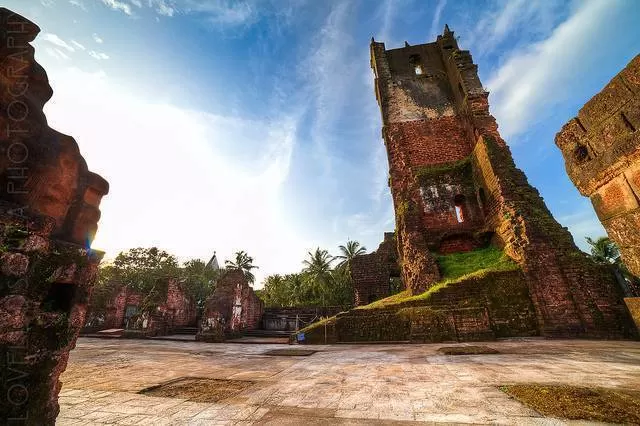
Solo Travelers: Immerse yourself in the history and contemplate the passage of time amidst the ruins.
Couples: Enjoy a romantic stroll through the ruins, capturing picturesque moments together.
Families: Spark children's curiosity with the captivating stories and architectural marvels of the past. Plan a picnic lunch in the surrounding gardens for a memorable family outing.
History Buffs: Delve deeper into the historical significance of the tower and the church complex through guided tours or independent research.
The St. Augustine Tower, standing tall amidst the ruins of Old Goa, serves as a powerful symbol of Goa's rich history and architectural heritage. Its journey, from a magnificent church complex to a solitary tower, is a poignant reminder of the impermanence of human endeavors. Yet, the tower's enduring presence also embodies resilience and the power of memory.
So, on your next trip to Goa, take a step back in time and explore the captivating legacy of the St. Augustine Tower. Allow it to transport you to a bygone era and inspire you to appreciate the enduring spirit of the past.









